Five rods of same material and same cross-section are joined as shown. Lengths of rods ab, ad and bc are l, 2l and 3l respectively. Ends a and c are maintained at temperatures 200∘C and 0∘C respectivelly.

For what length x of rod dc there will be no heat flow through rod bd ?
4l
2l
6l
9l
The correct Answer is:C
Step by step video, text & image solution for Five rods of same material and same cross-section are joined as shown. Lengths of rods ab, ad and bc are l, 2l and 3l respectively. Ends a and c are maintained at temperatures 200^(@)C and 0^(@)C respectivelly. For what length x of rod dc there will be no heat flow through rod bd ? by Physics experts to help you in doubts & scoring excellent marks in Class 11 exams.
Updated on:21/07/2023Topper's Solved these Questions
Similar Questions
Three rods AB,BC and BD made of the same materical and having the same area of cross section have been joined as shown is the The ends A,C and D are held at temperatures 20∘C Cand 80∘C respectively If each rod is of same length then find the temperature at the junction B of the three rods
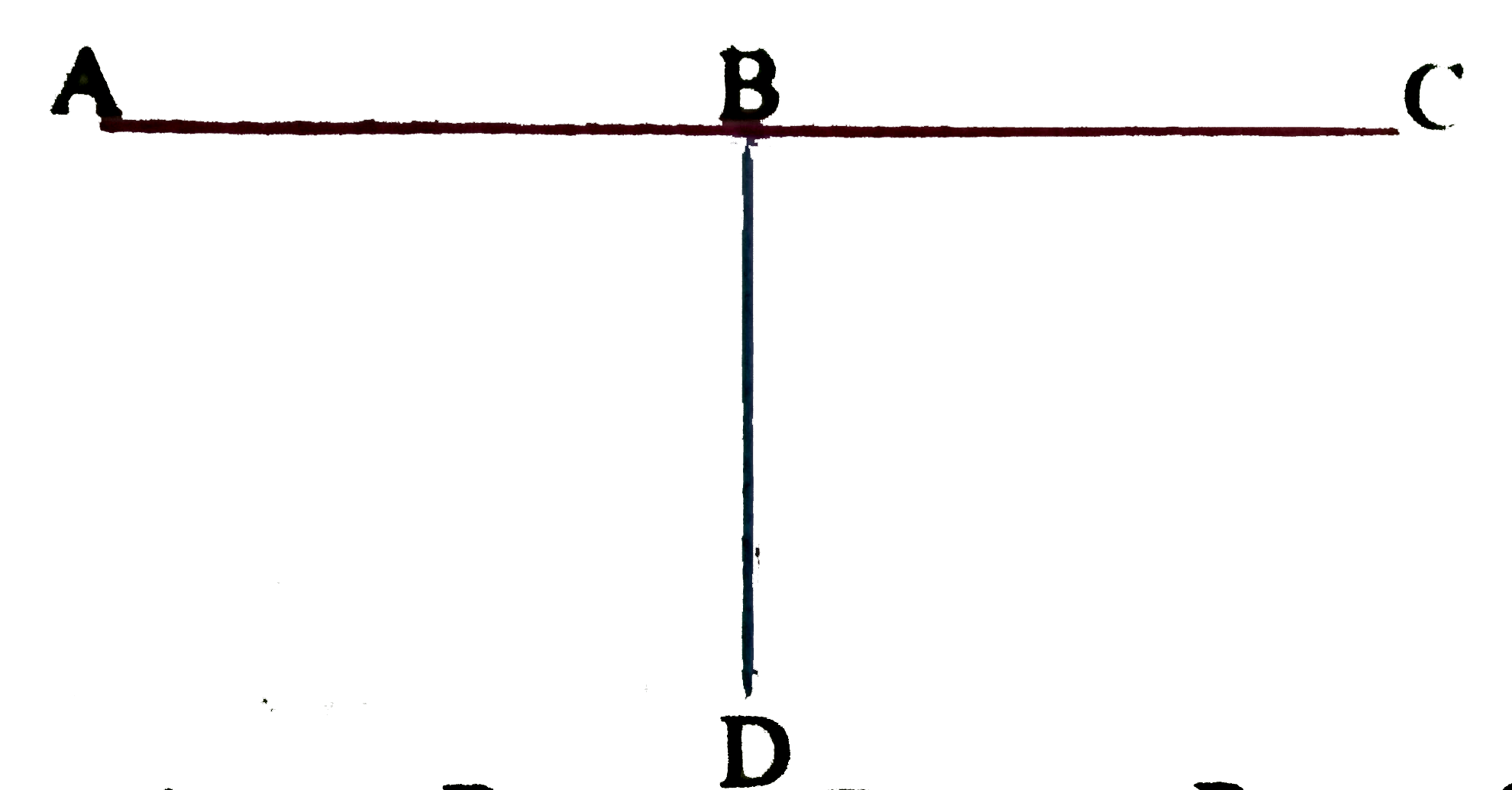 .
.
View SolutionThree rods made of same material and having the same cross-section have been joined as shown in fig. each rod is of the same length. The left and the right ends are kept at 0∘C and 90∘C respectively. What will be the temperature of the junction of the three rods?
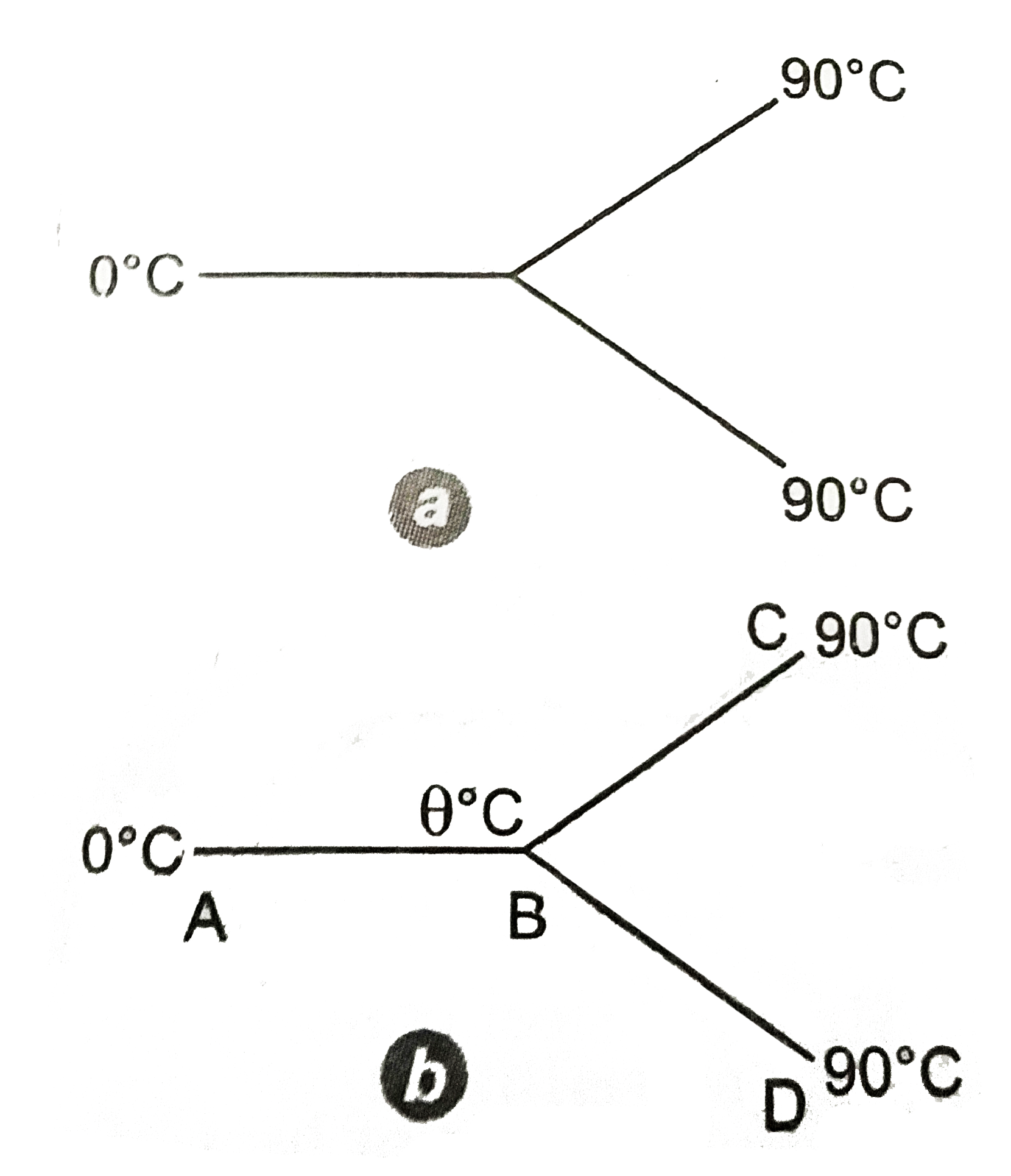
View Solution
Knowledge Check
Five rods of same material and same cross-section are joined as shown. Lengths of rods ab, ad and bc are l, 2l and 3l respectively. Ends a and c are maintained at temperatures 200∘C and 0∘C respectivelly.
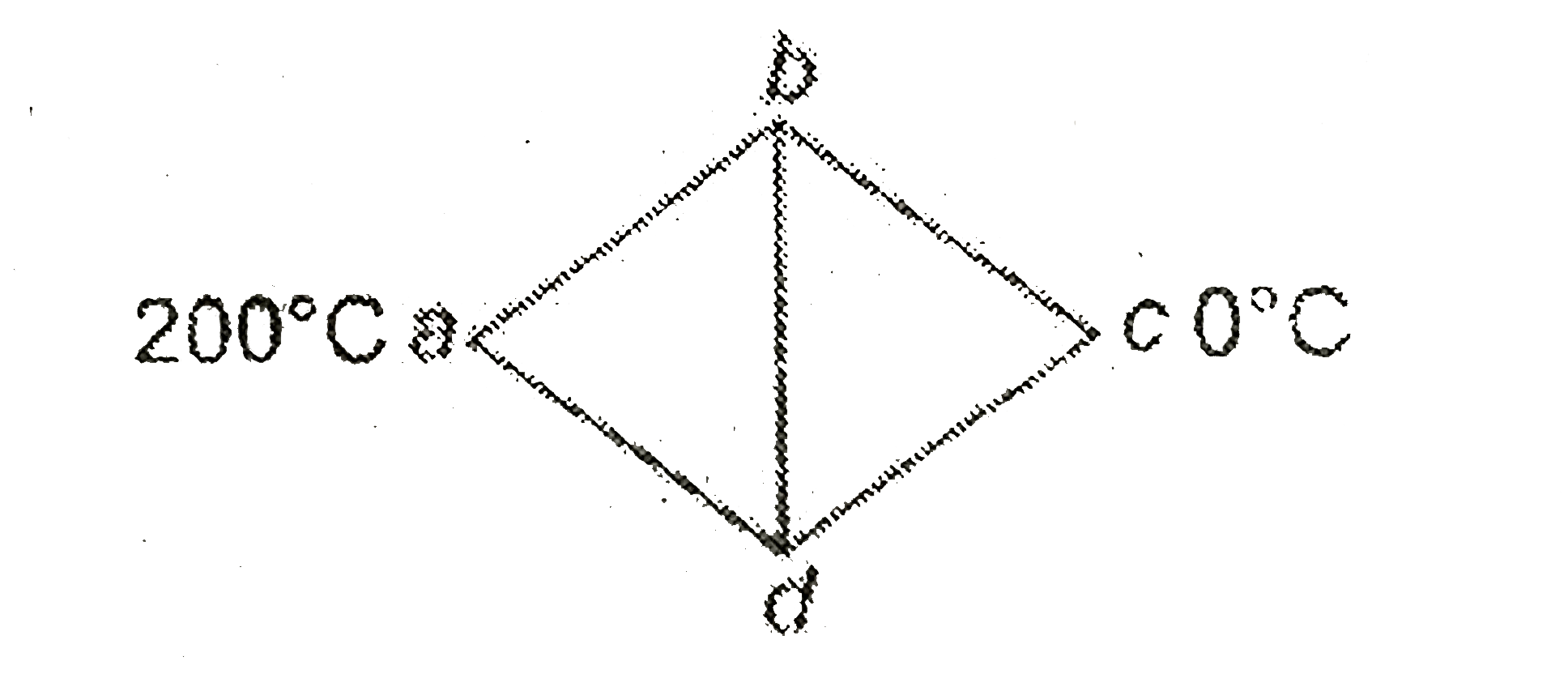
If x has the value calculated in the above question. Then temperature of junction b or d isA120∘CB160∘CC90∘CD150∘CThree rods made of same material and having the same cross-section have been joined as shown. In the figure.Each rod is of the same length. The left and right ends are kept at 0∘Cand90∘C respectively. The temperature of the junction of the three rods will be
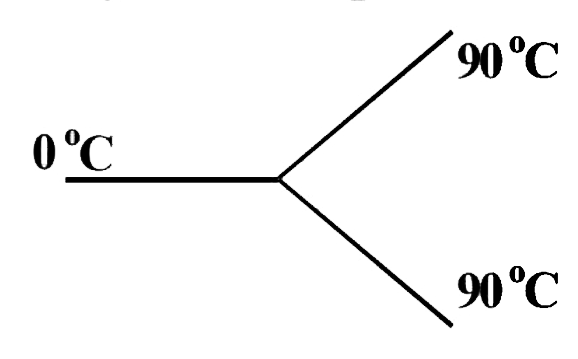 A45∘CB60∘CC30∘CD20∘C
A45∘CB60∘CC30∘CD20∘CTwo ends of a conducting rod of varying cross-section are maintained at 200∘Cand0∘C respectively. In steady state :
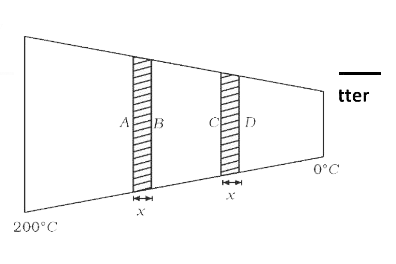 Atemperature differences across AB and CD are equalBtemperature difference across AB is greater than that across CDCtemperature difference across AB is less than that across CDDtemperature difference may be equal or different depending upon thermal conductivity of the rod.
Atemperature differences across AB and CD are equalBtemperature difference across AB is greater than that across CDCtemperature difference across AB is less than that across CDDtemperature difference may be equal or different depending upon thermal conductivity of the rod.
Three rods made of same material and having same cross-section have been joined as shown in Fig. 7(e).18. Each rod is of the same length. The left and the right ends are kept at 0∘C and 60∘C respectively. What is the temperature of the junction of the three rods.
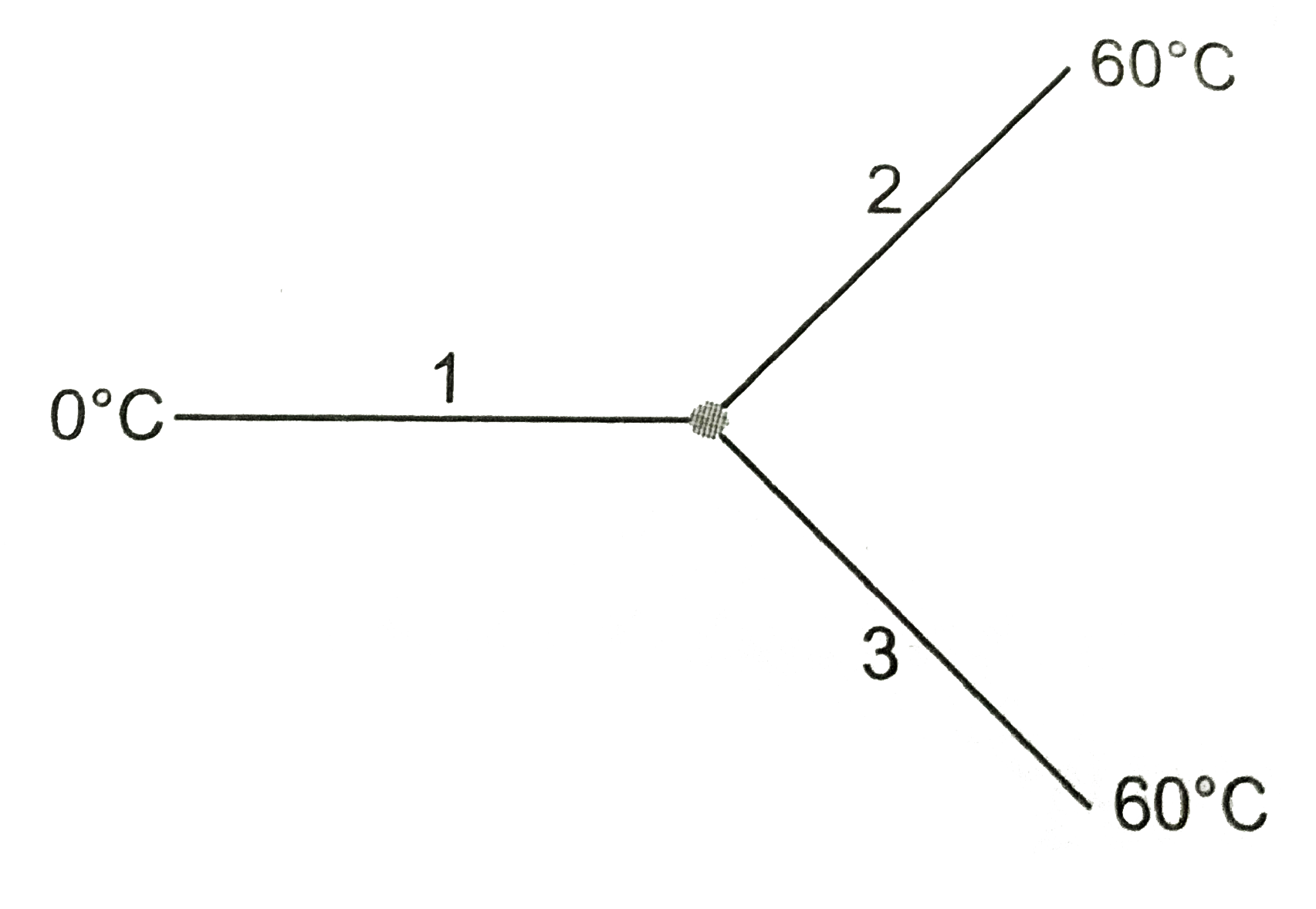
View SolutionFour identical rods AB, CD, CF and DE are joined as shown in figure. The length, cross-sectional area and thermal conductivity of each rod are l, A and K respectively. The ends A, E and F are maintained at temperature T1 , T2 and T3 respectively. Assuming no loss of heat to the atmospere, find the temperature at B.
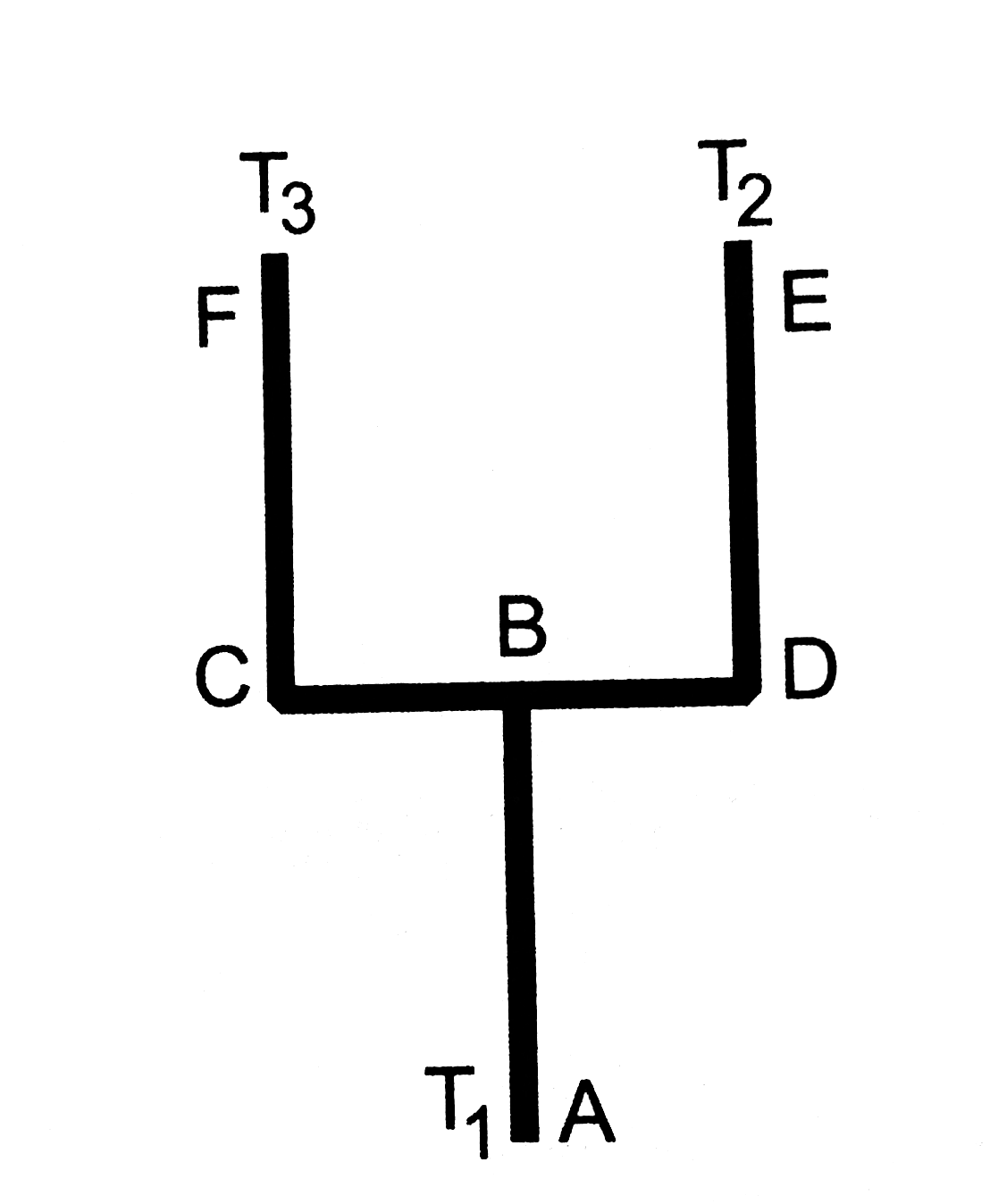
View SolutionTwo ends of a conducting rod of varying cross-section are maintained at 200∘C and 0∘C respectively. In steady state:
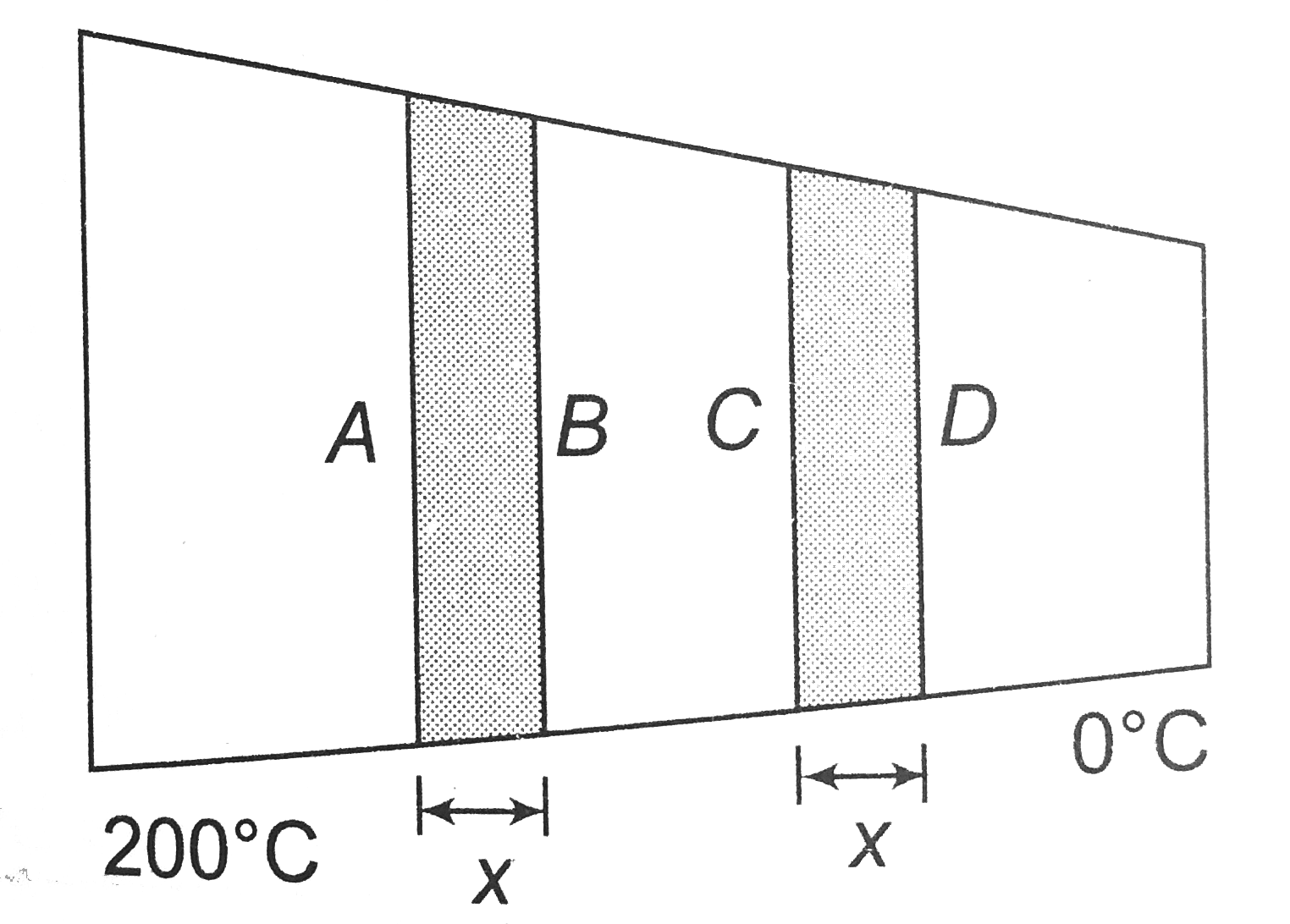
View SolutionTwo rods of same material and thickness are joined as shown below. The ends X and Y are maintained at X∘C and Y∘C respectively. The ratio of the heat flow in the two rods is –

View SolutionTwo rods of similar area of cross section and length are joined as shown in the figure. The ratio of their thermal conductivity is 2:3. The free ends are maintained at 100∘C and 0∘C respectivley. THE temperature at junction in steady state is

View Solution
